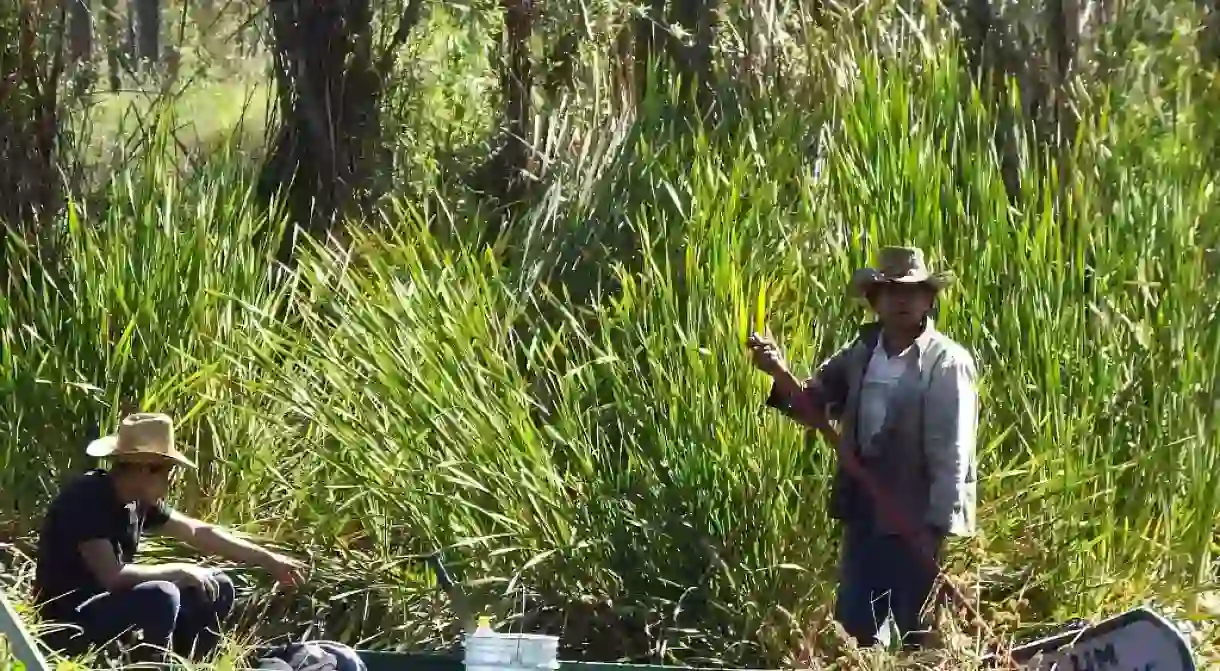Why the Xochimilco Canals Matter to Mexico City

You probably know the Xochimilco canals as waterways filled with floating party boats, ice-cold Coronas, and marimba bands. The canals have become a mandatory stop on every tourist’s itinerary. But the ancient canal system of Mexico City is much more than a simple tourist attraction. These canals are one of the city’s most important natural resources and are vital to the future survival of the capital. Here’s why.

Water
With 28 million people needing water for cooking, cleaning, and drinking, Mexico City has long had to bring in water from the land that surrounds the city center. The Aztecs built aqueducts to bring water from Chapultepec; the Spanish further depleted underground springs, and now, Mexico City residents use 65,000 liters of water per second, much of which comes from the canals of Xochimilco. Most of the underground sources that once fed the canals have dwindled down to a minimum output, and local plants now treat much of the canal water and release it back into the system. As the population of Mexico City continues to grow, the depletion of water from this area of the city places the future of this important natural reserve in grave danger.

Food
The island farms that “float” above the surface of the canals, called chinampas, have been in production for centuries. Many people consider their innovation and use as one of the great agricultural developments in history, comparable to the rice paddies in China and the farming system alongside the Nile River in Egypt. Today’s chinampas provide the city with much of its fresh fruits and vegetables, as well as flowers. While most farms are producing monocrops for sale in the local bulk markets, such as Central de Abastos and Mercado la Merced, a handful of plots are now working with organic community-supported agricultural organizations, such as Yolcan, to diversify organic crops for local restaurants and residents.

CO2
The chinampas and the canals are an important carbon sink for Mexico City. They are a bit like a mini-lung absorbing a portion of the city’s incredible carbon footprint at about 100 tons of carbon per hectare per year. As the city sprawl encroaches on this natural habitat, one of the most relevant dangers is that as the chinampas are cemented over, they will take in less and less carbon as time goes on and could raise the overall temperature of the city by two degrees Celsius.

Wildlife
Dozens of species of aquatic birds live and breed in the canals. Cormorants, herons and various types of ducks have made the canals their permanent home, and they survive on other local species of frogs, insects, and fish to survive. The infamous axolotl is an amphibian that is ONLY found in Mexico City’s chinampas—nowhere else in the world. Why is it important to keep these species alive and healthy in the canals? We are all linked in an ecological chain. Each animal has a part to play in keeping other populations in check, whether they be invasion fish or duck weed.

Flooding
The Mexico Valley (which really isn’t a valley at all but more like a plateau) has no natural drainage for the water that falls onto the land through rainfall or snow melt from the surrounding volcanos. That means that during the rainy season from May to October, all that extra water has nowhere to go. The canals have always been a counterbalance to the flooding that occurs during that time, using the flood waters to replenish the soil’s nutrients for the next harvest. As people build homes closer and closer to the waterways, there are fewer places for the water to flood naturally without damaging properties.

You can see after reading all of this that the preservation of the chinampas and the canal system are vital to Mexico City. Several local organizations are working to help farmers and also bring farmers back to the chinampas in order to farm many of the plots that were abandoned for better jobs in the city center. Organizations such as Yolcan are working to pay farmers a living wage for their work. Citizens groups are working to educate people about the canals and why they are so important to the city. It’s vital that residents and visitors alike work to protect this ecological treasure.













